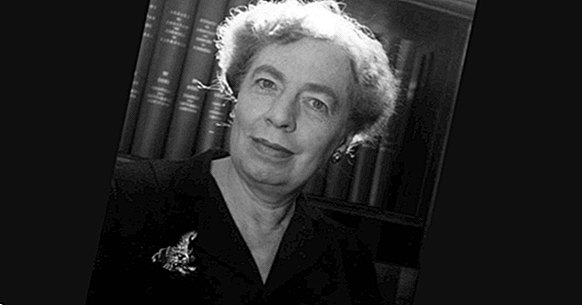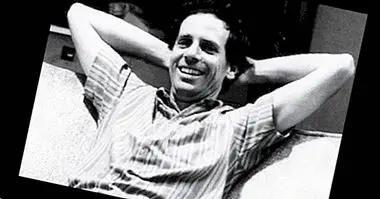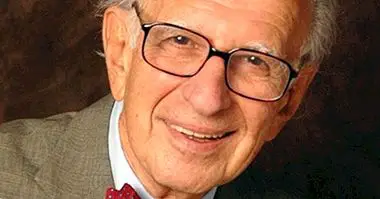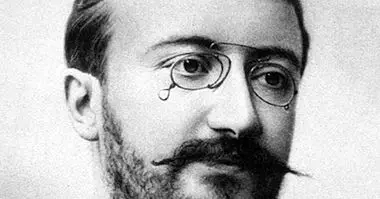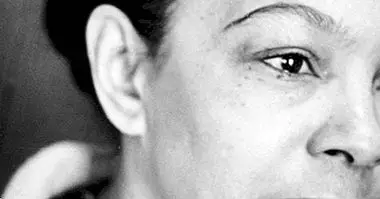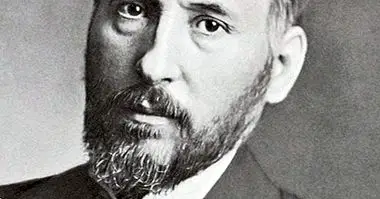Mary Whiton Calkins: biography of this psychologist and philosopher
Mary Whiton Calkins (1863-1930) was an American philosopher and psychologist, a pioneer in experimental psychology and the first woman president of the American Psychological Association. In addition, and in the context of contradictions between the social demands assigned to women, Calkins was one of the pioneers in the struggles for the participation of women in higher education and in science .
In this article we will do we will review a brief biography of Mary Whiton Calkins and we will see some of his contributions to gender equity and experimental psychology.
- Maybe you are interested: "History of Psychology: authors and main theories"
Mary Whiton Calkins: biography of an experimental psychologist
He was born on March 30, 1863 in Hartford, Connecticut. Daughter of Charlotte Whiton Calkins and a Presbyterian minister, Wolcott Calkins, as well as the eldest of five brothers with whom she maintained great closeness. He grew up and lived in Buffalo, New York, and later in Newton, Massachusetts.
In the year of 1882 Calkins began his studies at the Smith College for women, one year before the death of his sister Maud; event that marked part of his later training. He stayed at home for a while, where he also took care of his mother, and took private classes in Greek. It was in the year of 1884 when he returned to Smith College, and graduated with honors in classical philosophy .
Two years later he traveled to Europe, where he took the opportunity to continue studying Greek. When he returned to the United States, his father had prepared an interview for him at the newly created Wellesley College, a college for women in Massachusetts, where he sought to work as a teacher and researcher.
Calkins and the first Wellesley psychology laboratory
In 1888, Mary Whiton Calkins began working as a philosophy professor at Wellesley Women's College. At the same time the specialty of scientific psychology was opened and the lack of teachers prepared to teach courses in it was recognized.
To solve this, one of the psychologists offered Calkins, a training philosopher with important teaching skills, a position as a psychology professor. He thus had the opportunity to create the first Wellesley laboratory.
She accepted with the commitment of training in the area for at least one year. However, this generated a new problem: where to study. At this time the opportunities for women were almost nil and, in addition, Calkins had assumed family commitments, so he did not want to leave the city.
- Maybe you're interested: "Margaret Floy Washburn: biography of this experimental psychologist"
From "special student" to President of the APA
At Harvard University, and in a context where psychology and philosophy were not formally divided, but women's participation was denied outright in any case, there were several philosophers and psychologists who began to receive them as "listeners", both in their classes and in the laboratories. For example, William James and Josiah Royce were examples of teachers who did so, given that they stood firmly against the exclusion policies of Harvard women.
In 1889, Mary Calkins started taking classes in Physiological Psychology with James , and of Hegelian philosophy with Royce, within the Harvard University but as a "special student". In the following year, Calkins worked together with Edmund Sanford of Clark University, and founded the first psychology laboratory at Wellesley College, which despite different barriers he managed combined with teaching.
At the same time, during 1984 and 1985, Mary Whiton Calkins was trained at Harvard University and developed an investigation that had an important influence on modern experimental psychology. All this even after Harvard University responded with a resounding refusal to the request to officially recognize his doctoral studies . They offered him, on the other hand, a recognition from Radcliffe College, which was the "annex" school of the same university. Calkins rejected the latter because he did not want to legitimize the lack of legitimacy that Harvard made of the students.
She continued working at Wellesley College, as an assistant professor, then a professor of psychology and finally, one year before her death and once she had retired, she was recognized as a professor-researcher, without the official recognition of her doctorate by Harvard .
During the strong policies of academic and scientific exclusion of women, Mary Whiton Calkins was elected in 1905 as the first female president of the American Psychological Association . At the end, in 1918, she served as president of the American Philosophy Association.
- Maybe you're interested: "How are Psychology and Philosophy alike?"
The technique of associated pairs and the psychology of the self
His first works in psychology were focused on the study of memory. Among other things and as a result of her doctoral thesis, Mary Whiton Calkins laid the foundations of what we know as "partner peer technique" or "associated peer task" , currently used in cognitive assessment test. Broadly speaking, it consists of the proposal that we can learn and memorize them openly, until we are presented with some stimulus that results in the withdrawal of another.
Later, he focused on the development of a "self psychology", from which he suggests that mental processes exist without independence of the Self; that is, they are processes that belong to an "I".
Calkins said that the self is something indefinable , but that can be understood as an object of daily consciousness in reference to different characteristics: the totality, the singularity, the identity, the variability, and the relation of the self with other organisms or objects. In the constitution of the mental processes associated with the Self, Calkins was critical of functionalist psychology that included mental activities without "mental actors".
The psychology of the self, for her, is a kind of introspective psychology , which led him to differentiate between two types of psychological systems. On the one hand there is the impersonal psychology that tend to deny the Self when it focuses on the contents of consciousness and mental processes, and on the other hand, there is personal psychology that is based on the study of the self or the person. Calkins placed his proposals within the latter, in turn divided into a biological and a psychological dimension, closely related to each other.
Through dialogue with different perspectives of psychology and philosophy, as well as the criticisms he received about his work, Calkins continued to develop and significantly update the psychology of the self.
His studies on the self were presented in 1900, and from there published four books and more than 50 articles , which gave it a lot of prestige at a national and international level. Among his most important works are the The Persistent Problems of Philosophy, of 1907, The Self in Scientific Psychology of 1915 and The good man and the good, of 1918.
Bibliographic references:
- Psychology's Feminist Voices (2018). Mary Whiton Calkins. Retrieved June 25, 2018. Available at //www.feministvoices.com/mary-whiton-calkins/
- American Psychological Association (2011). Mary Whiton Calkins, APA's first woman president. Retrieved June 25, 2018. Available at //www.apa.org/pi/women/resources/newsletter/2011/03/mary-calkins.aspx.
- García Dauder, S. (2005). Psychology and feminism Forgotten history of women pioneers in psychology. Narcea: Madrid
- García Dauder, S. (2005). Mary Whiton Calkins: Psychology as a science of the Self. Athenea Digital, 8: 1-28.

